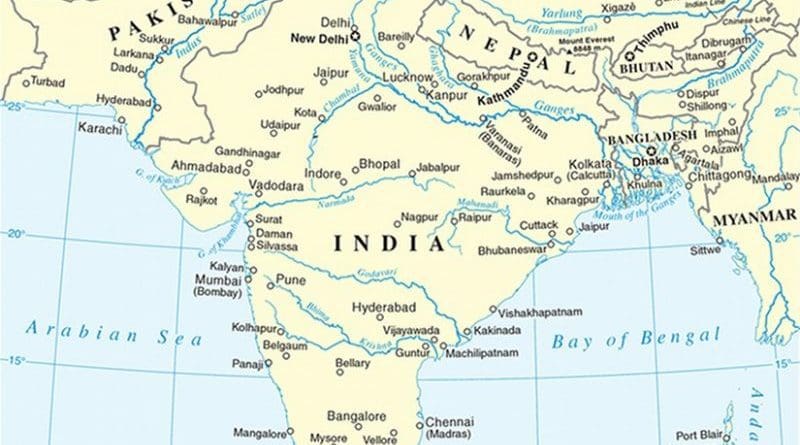The Quest For Regional Unity In South Asia And Pakistan’s Journey – OpEd
By Dr. Sahibzada Muhammad Usman
South Asia, encompassing India, Pakistan, Bangladesh, Sri Lanka, Nepal, Bhutan, and the Maldives, accounts for nearly a quarter of the global populace. This region, distinguished by its intricate amalgamation of cultures, religious practices, and ethnicities, coupled with historical intricacies, boasts a diverse tapestry of traditions yet is beset with conflicts.
The genesis of regionalism within South Asia can be attributed to the post-colonial epoch, as nascent sovereign nations began to grasp the salience of unified strength and interdependent collaboration. This sentiment culminated in the inception of the South Asian Association for Regional Cooperation (SAARC) in 1985, underscoring the region’s dedication to nurturing mutual trust and comprehension. Nevertheless, for regionalism to fully flourish, it necessitates an in-depth understanding of the broader socio-political intricacies that delineate inter-state affiliations and strategic paradigms. These intricacies span from entrenched disputes and economic competitions to present-day adversities induced by terrorism and climatic perturbations.
The rivalry between India and Pakistan, which has its roots in the tumultuous partition of 1947, stands as a paradigmatic instance of historical enmity impeding regional synergy. Contentions such as the Kashmir conflict not only stymie bilateral engagements but also imperil the cohesive objectives of SAARC. In tandem, ethnic insurrections, epitomized by the Tamil quandary in Sri Lanka, further convolute the regional milieu.
Pakistan’s significance in South Asian affairs is incontrovertible, given its demography and influence. Ranging from economic alliances to diplomatic overtures, Pakistan persistently endeavors to galvanize peace and stability within the vicinity. Economic symbiosis constitutes the cornerstone of efficacious regional undertakings. Despite amassing a combined GDP surpassing $3 trillion, intra-regional commerce in South Asia is conspicuously scant, representing a mere 5% of aggregate trade. Strategically positioned, Pakistan holds the potential to serve as a conduit linking Central Asia to the Indian Ocean, thus actualizing the vast commercial prospects of the zone. Through strategic frameworks like the CPEC and its subsequent extensions, South Asia might witness the emergence of a consolidated market advantageous to all its constituents.
The cultural mosaic of South Asia is enriched by a plethora of languages, customs, and mores. Pakistan, steeped in a profound historical legacy and eclectic cultural ethos, has been a staunch advocate of cultural diplomacy. Augmenting interpersonal connections, stimulating academic interchanges, and reveling in communal cultural festivities can help in dispelling entrenched suspicions and cultivating enduring alliances. The contemporary digital era proffers a multitude of avenues for South Asia. Pakistan, with its burgeoning technological sector, is poised to lead regional ventures in IT, digital commerce, and e-learning. The establishment of collaborative tech hubs can stimulate innovation and generate employment prospects for the region’s burgeoning youth demographic.
An irrefutable tenet of the 21st century revolves around the emergence of shared dilemmas that surpass national delineations. From the effects of climate change to the nuances of globalized trade, South Asia, as a cohesive entity, stands to either gain immensely or suffer collectively based on its response. South Asia, with its vast coastlines, dense populations, and agriculture-dependent economies, is particularly vulnerable to the impacts of climate change. Rising sea levels threaten the coastal cities, while erratic monsoons impact agriculture, the backbone of many South Asian economies. Pakistan, with its extensive river system fed by the Himalayan glaciers, faces the dual threat of glacial melt and water scarcity. In this dire context, regional cooperation isn’t just advisable; it’s imperative. Joint research initiatives, shared water management strategies, and regional climate resilience policies can help mitigate risks. Pakistan’s recent afforestation campaigns, like the ‘Billion Tree Tsunami’, can serve as models for regional initiatives, marrying environmental conservation with job creation.
The menace of terrorism has, unfortunately, affected several countries in South Asia. Pakistan, which has been at the frontline of counter-terrorism efforts, understands the gravity of this challenge more than most. It has successfully undertaken comprehensive military operations against extremist elements and has significant lessons to share in terms of intelligence coordination, border management, and de-radicalization efforts. For South Asia to be secure, nations must share intelligence, harmonize anti-terrorism laws, and engage in joint operations against common threats.
Pakistan, as a cornerstone of South Asia, has a unique responsibility and opportunity. Its efforts, both past and ongoing, in promoting regional integration, offer a blueprint for the future. Whether it’s through economic ventures like CPEC, peace initiatives like the Kartarpur Corridor, or cultural exchanges, Pakistan’s positive contributions to the South Asian narrative are undeniable. Yet, for South Asia to truly realize its potential, it requires a collective vision, where every member state, big or small, has a role to play. By moving past historical grievances and embracing a future built on mutual respect, trust, and collaboration, South Asia can emerge as a beacon of hope, progress, and prosperity on the global stage. In the end, the promise of tomorrow for South Asia hinges on its ability to harness the power of regionalism today. With Pakistan playing a pivotal role, the dream of a united, peaceful, and prosperous South Asia is not just a distant possibility but a tangible reality waiting to unfold.

